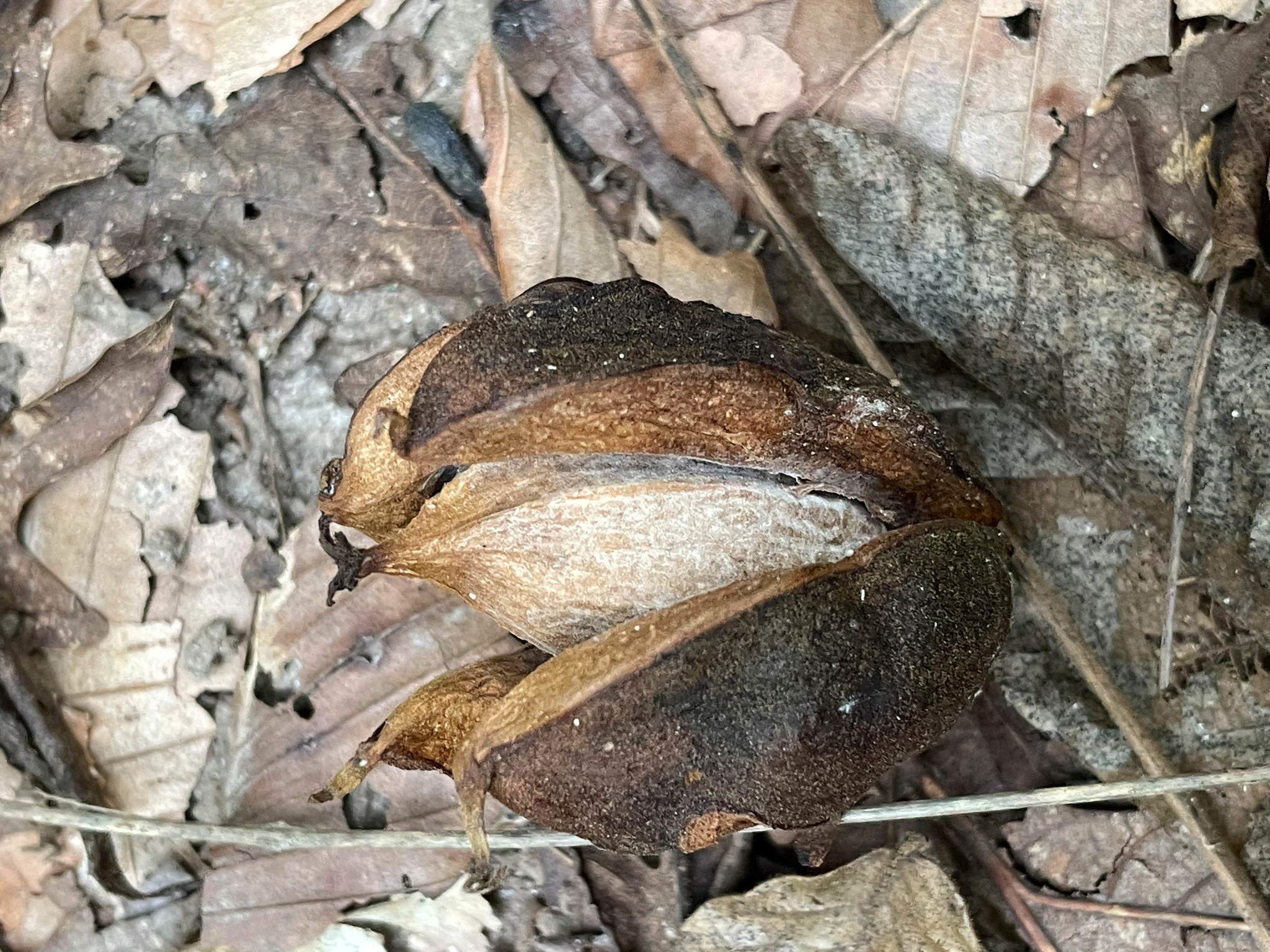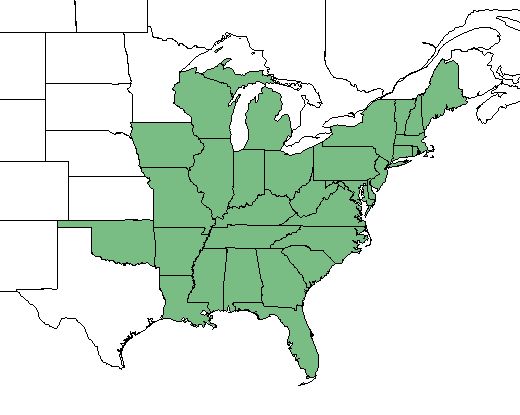Red Hickory
Carya ovalis (Wangenh.) Sarg.
Description
Red hickory, also called sweet hickory or sweet pignut hickory, is a member of the walnut family (Juglandaceae) ¹. It is a tall tree reaching 100 feet in height with a mature diameter up to 3 feet. The bark of young trees is gray with irregular furrows while the bark of mature trees forms plates that separate at the top and bottom producing a shaggy appearance ², but not as shaggy as shagbark hickory. The leaves are pinnately compound, typically with 7 leaflets, and are 12 inches in length and 8 inches across ². The presence of a red petiole of some individuals is the source of the common name. Separate male and female flowers are on the same tree (monoecious). Male flowers are in 2 to 4-inch catkins and the female flowers are red in groups of 2 or 3 at branch tips ¹. All are relatively inconspicuous. Fruits are round drupes, 1 to 1.5 inches and are surrounded by a 2 mm-thick shell that splits to the base at maturity ².

Mature trunk and bark of red hickory. D. Goldman, USDA ¹

Fruit of red hickory. J. Hall, (some rights reserved, CC BY-NC) Maryland Biodiversity Project. ³
Distribution
Red hickory is a tree of central and Southeastern USA. It is distributed from Maine to Wisconsin and south to Louisiana and Florida. Nowhere abundant in Maryland, red hickory can be found in the Piedmont uplands from Howard to Charles Counties and also in Talbot Counties ³.
Native range of red hickory. Guide to trees of North Georgia and adjacent states 5
Wildlife Importance
Red hickory is a host species for the Luna Moth, Oldwife Underwing Moth and Banded Tussock Moth (Halysidota tessellaris) ¹ ³. The nuts provide food for mammals including squirrels, foxes, black bear, chipmunks, flying squirrels, and raccoons ² . Numerous birds also eat the nuts including Red-Bellied Woodpecker, Blue Jay, Turkey and Bobwhite Quail ². Several species of bats are known to use red hickories as roosting sites and cavities for hibernation sites ².

Larva of Banded Tussock Moth. @ E. Concari (CC BY-NC 4.0) , Maryland Biodiversity Project 4
Economic Importance
The wood is extremely hard and is used to make tool handles, ladders, gun stocks and furniture 5. The nuts are edible. Red hickory wood is used for smoked meets.
Threats
- What may be the largest red hickory tree in the world is threatened by logging 6.
Interesting Facts
- The national champion red hickory is in Virginia and measured 140 feet tall and 37.5 inches in diameter as measured in 2017. 7
References
- North Carolina State Extension: Carya ovalis
- Illinois Wildflowers: Sweet pignut hickory
- Maryland Biodiversity Project: Red hickory
- Maryland Biodiversity Project: Banded Tussock Moth
- Guide to the trees of North Georgia and adjacent states:
Carya ovalis -
WEKU: Ky. logging threatens what may be the world’s largest red hickory
Contributed by J. Hull
